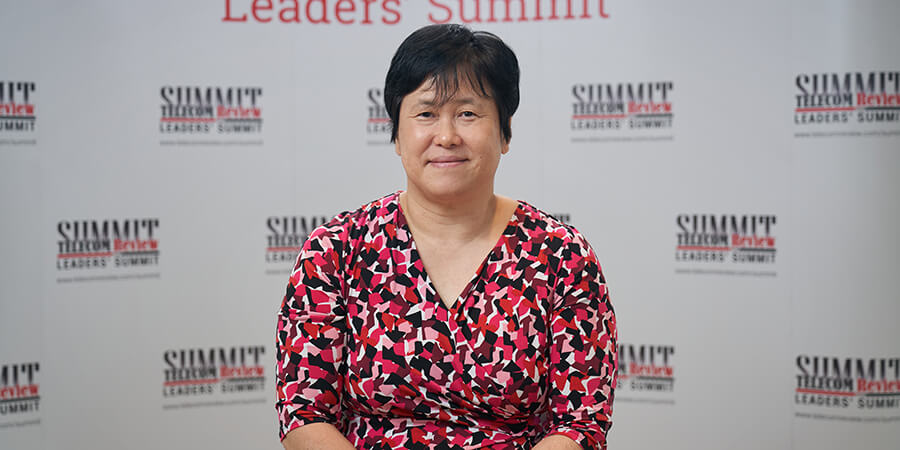One of the distinguished guests during the 16th Telecom Review Leaders’ Summit was Dr. Atsuko Okuda, head of ITU Regional Office for Asia and the Pacific. Together with the Telecom Review Group Founder Toni Eid, she was part of the debate focusing on “Building the Asian Dream,” where she was also a panelist in the event’s esteemed Women in ICT panel.
In this exclusive interview, Dr. Okuda talked about some of the regional initiatives they have implemented, particularly in support of girls and young women, and how ITU contributes to connecting and empowering communities in Asia-Pacific’s digital economy.
Can you share with us the progress in the implementation of the ITU Regional Initiatives for the Asia-Pacific region?
Our Asia and the Pacific Regional Office is implementing five regional initiatives which were adopted by the ITU membership. These provide the key pillars to structure our work around addressing the special needs of least developed countries (LDCs), Small Island Developing States (SIDS) landlocked developing countries (LLDCs), as well as harnessing ICTs to support the digital society and economy, enabling policy and regulatory environment, and development of infrastructure to enhance digital connectivity and promoting a safe and secure environment.
We recently completed the implementation of the previous regional initiatives, and due to COVID-19 pandemic and the increased demand for digitization, we had several activities and requests coming from member countries. We look forward to partnerships and collaboration across the industry and among our member states.
Asia-Pacific is one of the most dynamic regions in digital advancement worldwide. How will ITU keep up with the demand for utilizing ICTs and bridging the digital divide?
We are making sure that we accelerate our effort to connect the unconnected but at the same time making sure that they will not be left behind in the digital transformation effort. Asia and the Pacific region is diverse but dichotomies still exist. On one hand we have countries that are global leaders in 5G and fiber optics technology as well as innovative digital and e-commerce services. On the other hand, there are countries which need to catch up with the rapid changes of these technologies and services.
Our office works closely with member states to identify the relevant interventions, policies and programs to ensure that we make accelerated progress towards connecting the unconnected.
How will the Asia-Pacific region achieve inclusive and meaningful connectivity through ITU’s collective efforts and partnerships?
To achieve inclusive and sustainable development we need collective and concerted efforts. A one-size-fits-all approach will have limited efficacy. We have several targeted interventions tailored specifically to achieve this goal. For example, the gender digital divide is a real concern for all of us in Asia and the Pacific region and for girls and young women. Currently, we are implementing two flagship ITU programs to address the gender divide.
First is the Girls in ICT Day celebration. As part of it, ITU celebrates with its partners at the end of April every year to raise their awareness and encourage girls and young women to pursue a Science Technology Engineering and Mathematics (STEM) career in the universities as well as in the ICT sector. This program has become quite popular across the region. I hope that this initiative will increase and enhance the awareness and interest among girls and young women who are considering to pursue a career in STEM. The second program we are implementing is called EQUALS with GSMA and United Nations universities, among others.
We hope that these programs will collectively make significant progress to encourage more girls and young women to join the digital transformation journey and at the same time benefit from digital transformation and advances in technology. We also have other programs for persons with disabilities and older persons, as well as for child online protection.
As one of the formidable women in ICT leadership, how can you play a role in encouraging young women and professionals to enter the ICT industry and make significant contributions?
ITU’s initiatives are not for us alone to provide solutions for everyone but to really connect the girls and young women with different agencies, industries, governments, partners, programs and initiatives. I hope that it will motivate them to do something different. Through the programs that I have mentioned, I hope to motivate and inspire more and more young girls and women to have the right skillsets to pursue a career in the ICT industry which has traditionally been male dominated.
What is your outlook on Asia-Pacific’s digital economy in the coming years, and how will ITU continue to play its role moving forward?
I hope the digital economy in Asia-Pacific will be more inclusive and can reach people in remote and rural areas. I hope that will energize the rural economy and communities to facilitate their participation in the digital economy, not only within their own country but also across the region. I hope that it will be more sustainability and create more employment, education and health opportunities in those connected and empowered communities.
